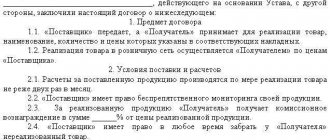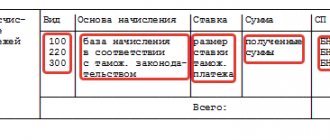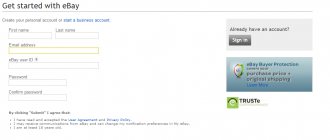The activity of distributing gift certificates, which guarantee the receipt of income to the seller in the amount indicated in them, is in demand when organizations conduct trade operations. They are used when providing services, selling goods, or can be transferred free of charge as a bonus to a major purchase.
A certificate is often offered in the form of a paper document or a plastic card with a certain denomination and number, which can later be exchanged for a product or service being sold.
The essence and features of transactions with a gift certificate
The offer announced by the company to sell gift certificates is recognized as a public offer, and its purchase by the consumer implies the latter’s acceptance of the offer (acceptance) and all the parameters specified in it (Articles 432, 433, 435, 437, 438 of the Civil Code of the Russian Federation).
The rules for using a bonus document are often specified in the document itself, and it is not possible to exchange it for money. At the end of its validity period, the amount intended for use is redeemed, that is, it remains with the seller and is not returned to the purchaser of the card. Also, a lost or damaged document cannot be restored.
A gift obligation is a variant of a preliminary agreement, according to which, within a certain period, the seller is obliged to draw up a purchase and sale agreement with the bearer of the document for the amount indicated in the form. The money paid for it acts as an advance payment for goods purchased in a future period.
For your information! Only the transaction amount is recorded on the card, and the name of the product and its price at the time of purchasing the certificate are not determined.
How to display gift certificates in 1C:UNF: step-by-step instructions
We offer clear step-by-step instructions.
Step 1 – Setting up the program.
First you need to make settings in the “Sales” section. To do this, select the “Even more opportunities” option.
The program will offer the “Gift Certificates” option. It must be checked.
In this case, a service counterparty will be automatically created to account for the prepayment of certificates.
After completing the settings, you will have a new item type “Gift Certificate”.
Step 2 - Configuring certificates.
The nomenclature card for certificates has flexible settings.
You can set the type of gift certificate:
- for a Fixed certificate, the denomination will be specified when creating the item in the Denomination field .
- The denomination of the Random Certificate will be established at the time of its sale.
- Partial repayment checkbox will allow you to pay with this certificate several times.
Set the validity period for the certificate until which time you can take advantage of the offer.
Options:
- No limit;
- Limited date. Here you need to select “End date”;
- Post-sale period. Specify the period when the certificate will become invalid.
You can set product restrictions.
To do this, follow the link Configure the scope of the certificate.
The program offers to select restrictions by product, product categories, or price groups.
You also need to define an Income Account . The amount that the client did not use will go to this account.
Step 3 – Buying cards – Selling goods.
When you accept gift cards at a warehouse, this moment should be reflected in the document Receipt invoice or Inventory posting . That is, just as it happens with other goods. To implement a certificate, use:
- KKM check;
- retail sales report;
- Sales Invoice;
- work order.
The sale of a certificate is reflected in “1C: Managing Our Company 8.3” in the same way as the sale of a product. Information about the advance received for the amount of the certificate is stored in the program until it is written off upon cancellation.
Tax accounting of the certificate
The purchase of a certificate is an advance payment for a service planned to be received in the future (upon presentation of a card), and the actual sale of a product/service is the exchange of documentary evidence of the prepayment made for the service or product. Therefore, when selling, the taxpayer organization does not have an object subject to mandatory payment of profit (Article 251 of the Tax Code of the Russian Federation). Income received as an advance payment for future goods is not taken into account when calculating the profit tax base.
Therefore, the amount of payment for gift obligations received by the distributor from a potential buyer on account of future services is taken into account when calculating the tax on profit in proceeds from sales at the time of the actual provision of the service (letter of the Ministry of Finance of the Russian Federation No. 03-03-06/1/268 dated April 25, 2011 , Article 248, 274 of the Tax Code of the Russian Federation).
If the buyer does not present (do not use) the certificate within a certain period, then the amount of the advance payment transferred to the seller for profit taxation is taken into account as property received free of charge or non-operating income (Article 250 of the Tax Code of the Russian Federation).
When calculating the amount of the obligatory value added payment (VAT), the sale of goods within the territory of the country is taken into account as an object for taxation (Article 146 of the Tax Code of the Russian Federation). Therefore, for VAT, the amount for determining the tax is calculated:
- On the day of realization of gift obligations, since advance payment for future services is made before the provision of these services (Article 167 of the Tax Code of the Russian Federation). The basis for calculating tax if there is a payment for future services is formed from revenues including tax - at the rate of 18/118 (Article 154 of the Tax Code of the Russian Federation).
- The next time the VAT base is determined during the direct provision of the service (exchange of the bonus document). The previously calculated VAT is deductible if the cost of the services provided is not less than the amount paid for the obligation (Articles 154, 171 of the Tax Code of the Russian Federation). When the cost of the service provided is less than the amount of the advance payment or the certificate has not been used, the previously accrued VAT is not accepted for deduction on the difference.
When identifying an object for calculating tax using the simplified method of taxation (USNO), enterprises take into account proceeds from sales (Article 346 of the Tax Code of the Russian Federation). In this case, the date of receipt will be the day of receipt of money, the day of receipt of other property or rights to it.
When purchasing a gift certificate, first of all, money is received, and after some time, the service is provided. Therefore, the object for calculating tax under the simplified tax system is the amount of payment for the obligation received by the seller on the day of its sale.
For taxpayers who use the amount of income received minus the amount of expenses as the object of taxation, proceeds from sold gift certificates are taken into account in the same way. They also have the right to reduce the indicated income by the amount of expenses incurred. The expenses of the enterprise include expenses after the actual payment, which includes the end of the buyer’s obligation to the seller regarding the transfer of a product or rights to property (Article 346 of the Tax Code of the Russian Federation).
For your information! All expenses incurred must have reasonable confirmation in the form of documents (Articles 346, 252 of the Tax Code of the Russian Federation).
Currently, in the corporate and business ethics of many companies, it is customary to congratulate their employees on various holidays; gift certificates are often used as a gift. But before you use this idea, you need to find out whether there will be any surprises for the accountant when registering gifts in accounting and tax accounting.
How does Russian legislation classify the certificate:
At the moment, the concept of “gift certificate” is not legally enshrined in Russian legislation. In a modern economic dictionary, one of the definitions of a certificate is the following: a written financial document, a certificate certifying the fact that its owner has contributed a certain amount of money and granting him the rights arising from this.
It follows from the provisions of the Civil Code that any rights of legal entities and individuals to certain property are qualified as property rights. Therefore, we can say that a gift certificate certifies the property rights of its owner to the company that issued this document.
This means that when a gift certificate is transferred to an employee by the organization that purchased the specified document, a gratuitous transfer of the property right confirmed by the certificate is carried out.
Documenting:
The company that issued the certificate formalizes its sale as an advance payment against future deliveries. Consequently, at the time of sale of the certificate, the seller is not obliged to issue invoices and invoices for the sale of goods. If certificates are purchased by bank transfer, the seller company is obliged to provide an act of acceptance of the transfer of certificates and an invoice for the advance payment (clause 3 of Article 168 of the Tax Code of the Russian Federation). If the certificates were purchased by a company employee on his own behalf in cash, then the seller of the certificates is obliged to issue only a cash receipt (letter of the Federal Tax Service of the Russian Federation for Moscow dated September 17, 2010 No. 17-15-098018), an invoice for the advance payment is not issued (p 7 Article 168 of the Tax Code of the Russian Federation).
When redeeming certificates by individuals, the preparation of primary documents occurs in the address of these individuals. Accordingly, the company purchasing the certificates does not receive any documents.
Receipt and Transfer of gift certificates to employees:
Gift certificates can be classified as monetary documents, since they reflect only the amount (face value) and they represent the right to claim certain property benefits.
The gratuitous transfer to the donee of a property right (claim) to the donor or a third party is formalized by a gift agreement. This follows from paragraph 1 of Art. 572 of the Civil Code. Let us note that the donation of the right of claim belonging to the donor to a third party is carried out in compliance with the rules provided for in Art. Art. 382 – 386, 388 and 389 of the Civil Code of the Russian Federation (clause 3 of Article 576 of the Civil Code of the Russian Federation).
The gift agreement is concluded both orally and in writing. An agreement for the gift of movable property cannot be concluded orally if the donor is a legal entity and the value of the gift exceeds 3,000 rubles.
Movable property is considered to be things (except real estate), including money and securities (clause 2 of article 130 of the Civil Code of the Russian Federation). Therefore, gift certificates are classified as movable property. This means that when transferring gift certificates with a nominal value of over 3,000 rubles. when giving gifts to employees, the organization is obliged to draw up a gift agreement in writing.”
When issuing a gift, an order (instruction) to reward the employee (workers) is drawn up in form N T-11 (T-11a), as well as a statement in any form. Let us recall that documents whose form is not provided for in the albums of unified forms of primary accounting documentation must contain the mandatory details listed in paragraph 2 of Art. 9 of the Federal Law of November 21, 1996 N 129-FZ “On Accounting”.
Is it possible to take into account the costs of purchasing gift certificates for income tax purposes:
When determining the tax base for income tax, expenses for any types of remuneration provided to employees of the organization that are not provided for in labor or collective agreements are not taken into account (clause 21 of Article 270 of the Tax Code of the Russian Federation). Therefore, if gift certificates are given to employees for anniversaries, holidays, or in the form of a bonus not provided for in an employment or collective agreement, the organization does not have the right to take into account the costs of purchasing certificates in reducing taxable profit. In accounting, these costs are reflected as part of other expenses (clauses 4 and 11 of PBU 10/99).
Procedure for calculating VAT:
When transferring gift certificates to employees, the organization actually carries out the sale free of charge. Such a transaction is subject to VAT at a rate of 18%. The VAT accrual date will be the day the certificates are handed over to employees.
Is it possible to apply a VAT deduction when purchasing gift certificates? The payment transferred when purchasing gift certificates is an advance payment for goods (work, services). If a gift certificate is purchased in a retail store for cash, by an employee on his own behalf, then he is issued only a cash register receipt, which is not the basis for deducting the amount of “input” VAT.
An organization can apply a tax deduction only if it has an invoice from the supplier. Therefore, the organization that purchases the certificates must request an advance invoice from the seller’s organization. In order to receive an invoice, the organization must purchase gift certificates from a VAT payer. In this case, the employee through whom the organization acquires these certificates must act on its behalf (that is, have a power of attorney), and the form of payment (cash or non-cash) does not matter. Since gift certificates were purchased to be given to employees of the organization, it means that they are used in transactions subject to VAT.
Examples of reflecting gift certificates in accounting and tax accounting.
1. Certificates were purchased by bank transfer, or in cash on behalf of the company (by an employee by proxy). The buyer was provided with an invoice for the advance payment.
| Contents of operation | Wiring | ||
| Funds were issued against the report for the purchase of certificates. | Dt. 71 Kt. 50 | 3 000,00 | |
| Certificates paid by bank transfer | Dt. 60 Kt 51 | 3 000,00 | |
| Certificates purchased by an employee in cash were capitalized (employee advance report) | Dt. 50.3 Kt.71 | 2 542,38 | (3000/1,18) |
| Certificates purchased by bank transfer have been capitalized | Dt. 50.3 Kt 60 | 2 542,38 | (3000/1,18) |
| VAT is reflected based on the received invoice | Dt. 19 Kt 60 (3000/1.18*18%) | 457,62 | |
| VAT is reflected in the purchase book (advance invoice) | Dt. 68.2 Kt 19 (3000/1.18*18%) | 457,62 | |
| Certificates handed over to employees | Dt 91.02 Kt. 50.3 | 2 542,38 | |
| VAT is charged on the free sale of property rights (gift certificates) | Dt. 91.02 Kt 68.2 | 457,62 | (2542,38*18%) |
| Based on constant difference. A permanent tax liability is reflected. | Dt. 99 Kt 68.4 | 600,00 | (3000*20%) |
2. Certificates were purchased in cash by a company employee on his own behalf:
| Contents of operation | Wiring | ||
| Funds were issued against the report for the purchase of certificates. | Dt. 71 Kt. 50 | 3 000,00 | |
| Certificates purchased by an employee in cash were capitalized (employee advance report) | Dt. 50.3 Kt.71 | 3 000,00 | |
| Certificates handed over to employees | Dt 91.02 Kt. 50.3 | 2 542,38 | |
| VAT is charged on the free sale of property rights (gift certificates) | Dt. 91.02 Kt 68.2 | 540,00 | (3000*18%) |
| Based on constant difference. A permanent tax liability is reflected. | Dt. 99 Kt 68.4 | 708,00 | (3000+540= 3540 *20%) |
Personal income tax
If an organization issues gift certificates to employees on the basis of paragraphs. 1 item 2 art. 211 of the Tax Code of the Russian Federation, they receive income in kind in the form of a property right to receive goods (work, services) from the company issuing certificates within the limits of their denominations. (Letter of the Ministry of Finance of Russia dated September 17, 2009 No. 03?04?06?01/240).
The attribution of income received by taxpayers in the form of the value of gift certificates to gifts, bonuses or other types of income depends on the documentation of the payment of income. Therefore, if the issuance of certificates is documented as gifts from an organization, then their value is up to 4,000 rubles. exempt from personal income tax. (clause 28 of article 217 of the Tax Code of the Russian Federation). For amounts exceeding the specified amount, the organization calculates personal income tax in the general manner, applying rates of 13 and 30%, respectively.
Personal income tax is calculated on the date of transfer of the gift certificate (clause 2, clause 1, article 223 of the Tax Code of the Russian Federation). An organization as a tax agent is obliged to withhold the calculated amount of tax directly from the taxpayer’s income upon actual payment (Clause 4 of Article 226 of the Tax Code of the Russian Federation). For example, when paying regular wages in cash.
Insurance contributions to extra-budgetary funds
Payments and other remuneration within the framework of civil contracts under which ownership or other proprietary rights to property are transferred are not subject to insurance contributions to extra-budgetary funds. Grounds – Part 3 of Art. 7 of Law No. 212-FZ. The Ministry of Health and Social Development of Russia in Letters dated 02/27/2010 N 406-19 and dated 03/05/2010 N 473-19 explained that if an employer gives gifts to an employee under a gift agreement concluded in writing (Articles 572 and 574 of the Civil Code of the Russian Federation), then Insurance premiums are not charged on their cost.
Thus, the value of gift certificates issued by an organization to its employees under written gift agreements in connection with a holiday or significant event, as well as for success in work (production achievements), is not subject to insurance contributions to extra-budgetary funds.
According to clause 4 of these Rules, insurance premiums for injuries are not charged for payments that are listed in the List approved by Decree of the Government of the Russian Federation of July 7, 1999 N 765. Payments made by the organization in favor of employees in the form of issuing gift certificates are not indicated in the said List. Thus, the employee's income in the amount of the nominal amount of the gift certificate is subject to injury insurance premiums. This applies to gift certificates issued by the employer as gifts in connection with both a holiday (significant) date and in connection with production indicators.
Explanations on this issue are given in Letters of the Social Insurance Fund of the Russian Federation dated October 18, 2007 N 02-13/07-10008 and dated October 10, 2007 N 02-13/07-9665, Resolutions of the Federal Antimonopoly Service of the North-Western District dated October 13, 2008 in case N A56-52979/2007, FAS of the East Siberian District dated 04/23/2008 N A74-1151/07-F02-1149/08 and FAS of the Ural District dated 03/05/2007 N F09-1179/07-S1.
Polozova Irina General Director of LLC PBC "Chief Accountant"
Accounting certificate
The procedure for recording bonus documents is divided into several stages:
- manufacturing;
- sale (realization);
- repayment (exchange) of a gift obligation for a product;
- redemption of certificates not provided for exchange.
In relation to gift forms, accounting provides for accounting for expenses associated with their production. Such costs related to the acquisition and sale of goods are classified as expenses for ordinary activities. The following entries must be made in accounting:
- expenses for creating documents: Debit 44 accounts. (Sales costs) / Credit 60 inc. (Settlements with suppliers/contractors);
- accounting for mandatory budget payment (input VAT) on the forms recorded in accounting: Debit 19 accounts. / Credit 60 credit;
- acceptance of tax for deduction (input VAT): Debit 68 accounts. (VAT calculations) / Credit 19 counts;
- posting of liabilities: Debit 006 account. (Strict reporting documents, sub-account “Gift Certificates”).
On the off-balance sheet account (006), forms are recorded by quantity, identification numbers or nominal value.
Expenses for the production of forms are classified as other expenses, they are subject to write-off as expenses of the current period (month), and can also be counted against the items of advertising expenses of the enterprise in the form of the cost of their purchase (no more than 1% of sales revenue).
When accepting gift forms for payment, sales tax is calculated and the amount of tax calculated from the prepayment is taken for deduction. Transaction transactions will be as follows:
- reflection of the received prepayment: Debit 50 account. (Cash) / Credit 62 accounts. (Settlements with customers, subaccount “Advances received”);
- accrual of tax (VAT) on received prepayment: Debit 62 accounts. / Credit 68 credits;
- writing off forms: Credit 006 account;
- reflection of receipts from the sale of a product: Debit 62 accounts. / Credit 90 credit (Sales, subaccount “Revenue”);
- write-off of goods/services sold: Debit 90 account. / Credit 41 credits (Goods);
- accrual of tax (VAT) on revenue: Debit 90 account. / Credit 68 credits;
- offset of prepayment: Debit 62 accounts. / Credit 62 credits;
- offset (reversal) of previously paid (prepaid) VAT: Debit 62 inc. / Credit 68 credit
For your information! VAT paid on an advance payment previously received is not refundable in a situation where the sold certificates are not used by buyers within the prescribed period.
Postings for unused gift obligations:
- reflection of the size of unused documents in the amount of receipts: Debit 62 accounts. / Credit 91 credit (Other income and expenses);
- attribution to expenses of VAT paid on prepayment: Debit 91 account. / Credit 62 credits (sub-account “Advances received”).
Certificates that are not sold within the period established for use are subject to destruction with the drawing up of an appropriate act and subsequent deregistration.
Using cash registers when selling certificates
Companies that make payments when providing services/selling a product using payment cards or cash are required to carry out all payments based on technical devices of a cash register type (CCP). In this case, copies of the cash register must be registered in the state register (Federal Law No. 54, 05/22/2003). When working with a cash register, at the time the buyer pays money, the seller must give him a cash receipt printed on the cash register.
A gift obligation is a specific advance payment (not a product), therefore, when selling it, an enterprise must use a cash register and run a check (at the time of sale). Similarly, a check at the cash register must be entered (in a separate section of the cash register) when paying for goods using a gift document (letter of the Ministry of Finance of the Russian Federation No. 03-03-06/1/268, 04/25/2011).
Returning a certificate
Returning a certificate is possible only if it occurs within one cash register shift from the moment of its purchase (i.e. the buyer bought the certificate and returned it on the same day). For this case, there is a button of the same name in the cashier’s workplace:
The program displays a list of certificates sold during the current cash register shift, select the one you need and issue a refund:
We return money to the client:









